All airplanes are a compromise of one sort or another. Models that fly slowly with great confidence aren’t usually fast. Fast airplanes are usually fond of runway. We love aircraft with generously sized cabins, but that aspect also takes a cut into performance and the result is likely to weigh more. Is any given design too slow? Just add horsepower, except that involves yet more weight just to do that plus you’d better plan to carry that extra fuel your more powerful engine desires. Depending on where you dine, lunch may be reasonably priced but it’s never free.
The trick, of course, is to find the balance. For Kitfox, the solution, while still keeping a sharp eye on that ever-elusive sweet spot of performance and intended function, is simply three different airplanes. In the current Series 7 lineup, you have the STi, a backcountry specialist whose airfoils and overall configuration give it the best performance for those with a penchant for gravel-bar “runways” and embarrassing those who need more than, say, a couple hundred feet of turf from touchdown to turnoff.
In the middle you have the Super Sport, which carries slightly better cruise performance than the STi but pays a small price at the low end of the scale. Not much of one, mind you, but for the backwoods enthusiast, every little bit counts. And it’s not just showing off. Better low-speed handling and lower stall speeds add useful safety margins for these kinds of operations, which tend to be committed where the winds might not be doing you favors and, especially in summer, the density altitude rests quietly, waiting to bite. Even so, the Super Sport has been a huge success for Kitfox because it straddles both worlds—legit backcountry flying with just enough speed so that you’re not going to grow facial hair just getting to your favorite spot.
Clipping Wings
Naturally, the Speedster continues along that performance through line to focus more on speed, although it does so with one eye on retaining as much low-end prowess as it can. To get there, the Speedster, which has the same airfoil as the Super Sport, gives up 3 feet of span, to 28 feet total, which is actually 4 fewer feet of span than the STi. It also uses the symmetrical flaperons, which can also be fitted to the Super Sport, though it’s not the standard configuration. By contrast, the regular Super Sport and STi flaperons have different curves top and bottom, which makes the airplane a bit heavier in roll but provides a bit more flap effectiveness. Compromise, it’s everywhere.
In just about every way, the Super Sport and Speedster are the same. Under the Poly-Fiber fabric, the wing, with its tubular aluminum spars and wood ribs, is the same structurally. In fact, the flaperon span is the same, which you’ll note when you see a Super Sport and Speedster side by side; the Speedster’s controls go right out to the wingtip while the wing extends beyond them on the Super Sport. Hey, that’s the very definition of a clip wing, isn’t it?
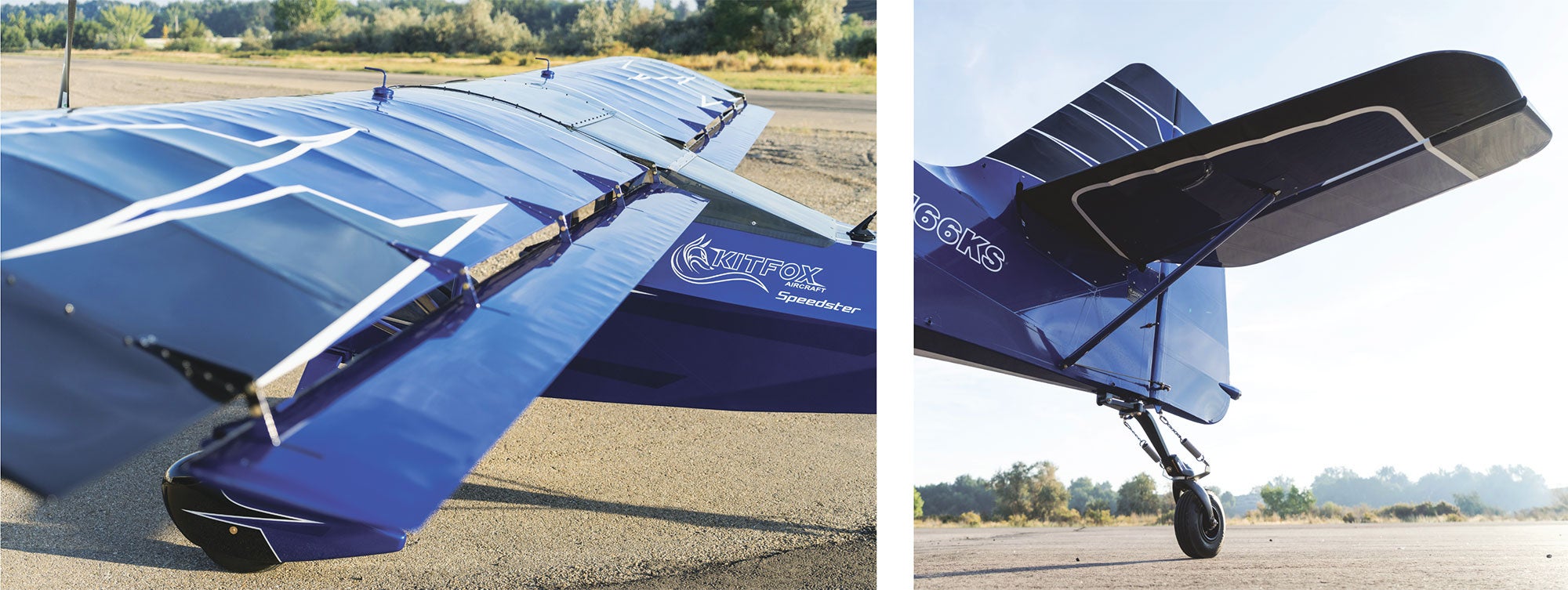
symmetrical flaperons (left). You can order the “airfoil” tail (above) for other Kitfox models if you want.
Down below, the aluminum Grove gear is standard on the Speedster, as it is on the Super Sport, though many SS builders are opting for the cabane-style gear (looks a bit like a Cub’s) that’s standard on the STi. Hanging from that sleek aluminum gear are 6.00×6 main wheels and Grove brakes cloaked in standard fairings. At the other end are Speedster tail feathers, which are more airfoil shaped than the flatter units standard on the Super Sport and STi. Basically, this is what you do when looking for a bit more speed and efficiency out of a design.
More Motivation
While the Super Sport and the STi are by far the sales leaders for Kitfox, company owner John McBean really wanted another Speedster. And since the Rotax 916 iS has become the engine of choice on all the Kitfox models, it made sense here, too. Finally, he fitted this Speedster with a propeller he’s come to appreciate, the 76-inch MT three-blade constant-speed unit. It turned out to be a great match with the 916, providing really strong takeoff and climb performance without sacrificing much in the way of cruise.
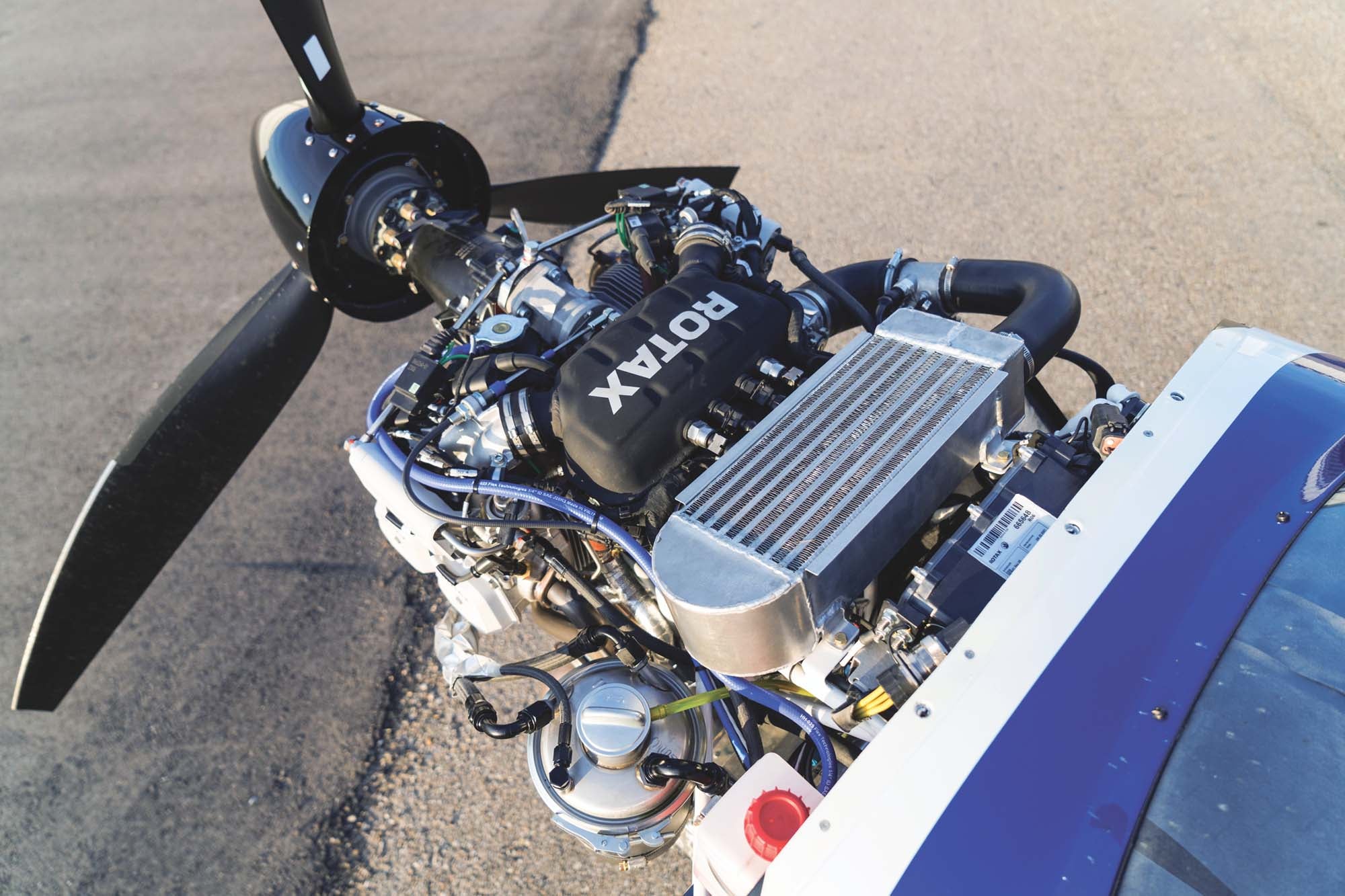
Kitfox uses the same firewall-forward configuration with the Speedster as it does with the Super Sport, so the 916 has its coolant radiator and oil cooler stacked on top of each other, the assembly hanging beneath the engine in the generous flow of the lower cowling duct. The turbocharger is just behind the copilot-side bank of cylinders and inhales through an air filter located inside the NACA duct there. Inlets surrounding the prop spinner deliver air to the cylinder barrels as well as to the intercooler, which is wedged between the induction system and the firewall. While the install does look busy, access to the major maintenance items has been maintained.
McBean and I were about to confirm how well it all worked in the Speedster but first you need to get the whole thing running. The 916 iS is a heavily computerized engine that relies on certain logic sequences to operate properly. That begins with the start. Find the part of the display that shows throttle position—it’s a little buried in the G3X system as installed—to around 54%. That’s the position the ECU is looking for at start and that results in a smooth transition from cranking to running. (Incidentally, the G3X Touch has a serial connection to the Rotax ECU to get engine monitoring data. All the probes go to the Rotax unit; the Garmin is just reading the tea leaves.)
McBean likes to begin the start sequence with the EMS backup system running—this is a standalone battery that can run the instruments in the case of a main-system failure. Rotax fits the 916 with two separate charging systems to power two “lanes” of the ECU for redundancy. But if one of those sources goes dark, the engine takes basically all the charging capacity, so a backup of sorts is smart for an all-electric panel like this. The start procedure is to set throttle position, turn on Lanes A and B, flip on one of the two electric fuel pumps, then flip the EMS backup to its momentary start position. And crank. The Rotax hums to life. Idle is 2000 rpm but you do need to raise speed to 2700 momentarily to get both sides of the charging system online. Once it clicks in, come back to 2000 rpm and let the engine warm up.
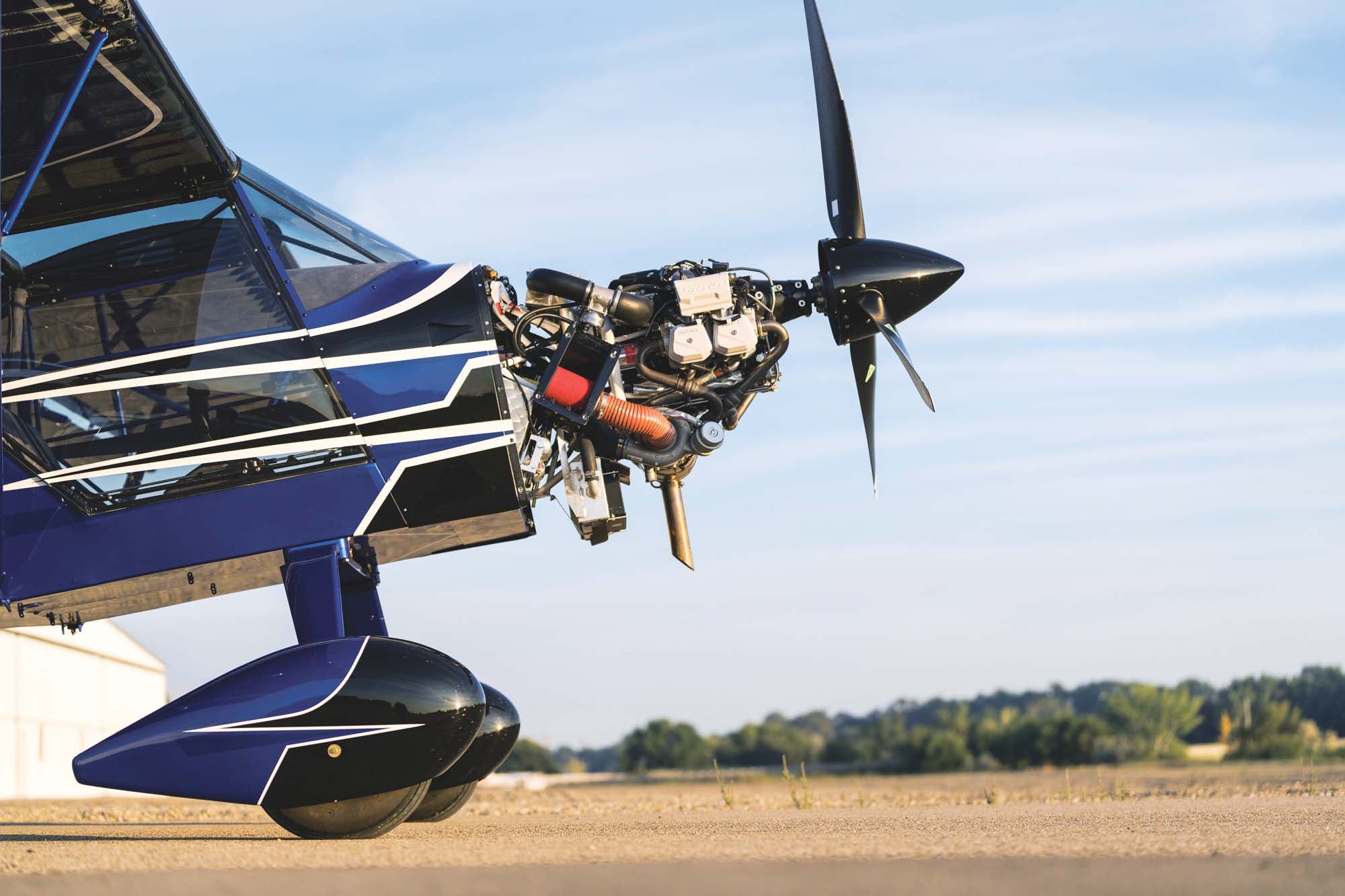
It was most of the way there by the time McBean and I had finished setting up the radios, so we could taxi out. The runup is also typical 916, where you run each Lane separately for a few seconds at 2500 rpm. You’re checking both sides of the ECU, looking for indications that either is in good health and that, once restored, the Lane Fault lights extinguish. Check each fuel pump. Then run up to 4500 to exercise the hydraulic MT prop. Set your trim and flaps, and it’s time to go.
A Difference in Attitude
The last two Kitfoxes I flew were the 915-powered STi, with its tall cabane gear and big tires, followed by the Super Sport we reported on earlier this year, which has the same Grove gear as the Speedster wears but with the larger 26-inch Airstreaks. There’s no question that the Speedster rests at a flatter angle of attack on the ground thanks to the 6.00×6 tires under those wheel pants. I didn’t really mind this as the visibility over the nose is quite good and the attitude with the shorter wing feels about right.
Initial takeoff is strong, as you’d expect of an airplane sitting at just under 1500 pounds with 160 hp and a constant-speed prop up front. With McBean and me in the airplane, no baggage to speak of and 24 gallons of fuel on board, we were just under 1460 pounds; max gross is 1550 pounds. It’s worth noting that neither of us is small and this particular Speedster is very well equipped.
In any case, the Speedster made quick work of the takeoff roll with very good yaw stability. I discovered and subsequently began to correct for that little jink of the nose as the tailwheel gets light. I confess that because my most recent taildragger time was in the Carbon Cub UL, which is a bit longer and wants a different pitch treatment on takeoff, at first the Kitfox felt slightly short coupled. But that was just me getting my head around what it wanted. After a few landings, I felt quite comfortable with it.
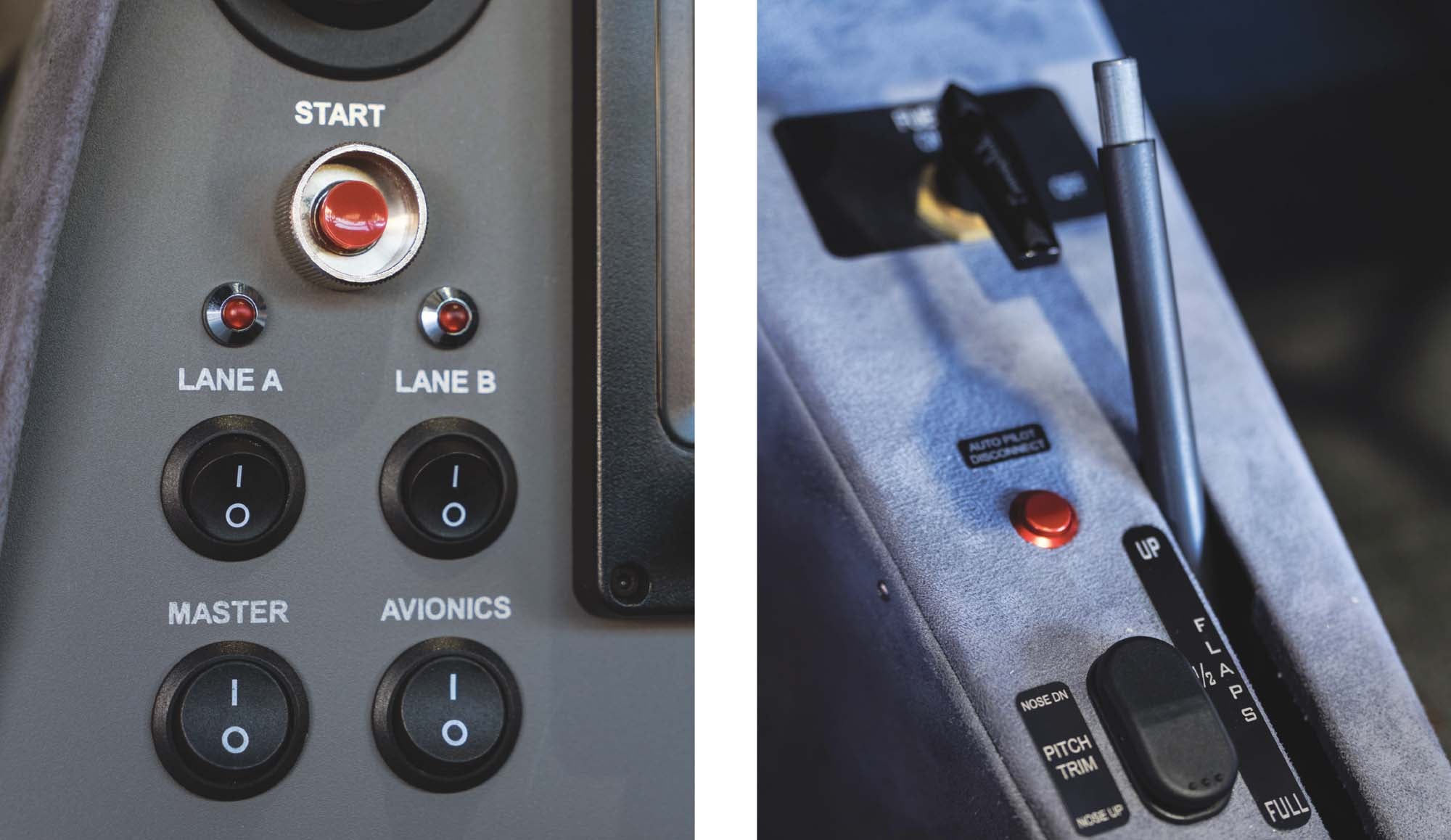
As the Speedster gleefully heads skyward, something else becomes apparent: its really sweet roll response. Here, you can definitely feel the clipped wing and the symmetrical flaperons doing their thing. There’s no on-center dead zone, no hint of slop in the system, nothing that takes away from how crisply the Speedster rolls. Small corrections are just as easily managed as cranking it into a 60° bank. You don’t use a ton of stick movement but what you do use has enough feedback to make the roll axis instantly understood. You don’t really think much about it. Merely will the airplane to turn, and it does.
By contrast, the Speedster is notably heavier in pitch, as you’d want. It’s also very much a trim-first airplane. (The electric trim switch is on the center console between the seats. Drop your hand from the throttle and it’s right there.) If you trim for a given airspeed, the Speedster works hard to stay there. Pull it off trim speed and the nose will hang for just a second then start a solid correction. But it always surprises me. The Kitfox is a lightweight airplane and I somehow expect very light control forces. Not true in pitch, that’s for sure.
So, Performance?
Normal takeoffs are with one notch (half) flaps. Listening to the recording of the flight, the Speedster is off less than 5 seconds after applying full power, which in the 916 iS ends up being a whopping 50 inches of manifold pressure and 5800 engine rpm. Soon after liftoff, you can reset to flaps up and pull the prop back to 5500 rpm, where the engine sloughs off a few inches of boost (now down to 45 or so) and settles on a steady 10 gph. We climbed at 87 mph (76 KIAS), which is faster than best rate, but we still went upward at 1000–1200 fpm. Our climb didn’t last long because McBean and I decided to follow the Snake River northbound to see what we could see. In this realm, you can pull back to 5–6 gph to sightsee.
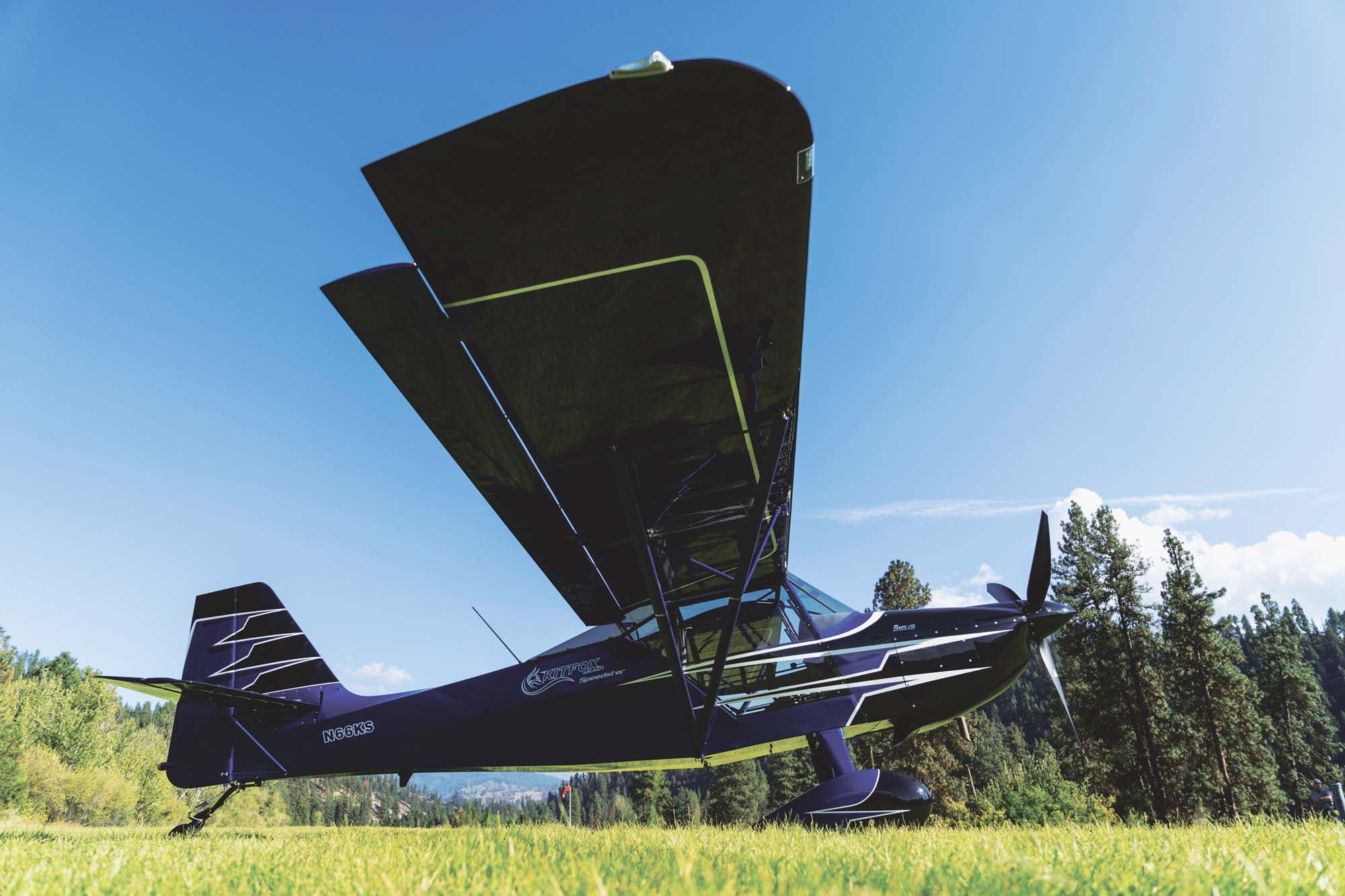
Fun complete and many bug carcasses obtained—sorry, guys—we took the Speedster up to altitude. For this, we used a steady cruise-climb at 40 inches of manifold pressure, 5200 rpm and 8.5 gph—according to the Rotax ECU, this was about 90% of max-continuous power. Call it 123 hp. We took it easy at 97 mph (84 KIAS) but still got 1000 fpm from 3500 feet all the way to our test altitude of 10,500 feet msl. At no time did the temps get into the yellow warning zone, so it’s clear that McBean’s efforts to get the engine cooling managed have paid off. Moreover, the ECU handled fuel flow as well as the turbo wastegate, so on our day the power maker was holding steady with no need for human intervention. You sit there, looking outside, occasionally glancing in at the instruments.
At 10,500 feet we set up for 74% of max-continuous and 5300 rpm, seeing 140 mph TAS (122 KTAS) on 6.4 gph. That’s 10 mph faster than Kitfox lists for the Speedster, but that spec was with the smaller Rotax. Moreover, because the turbo engine allows it to climb so well, altitudes you might not consider in a normally aspirated Speedster become not just available but really desirable. Summer bumps? Outclimb them. Weather or terrain? Also surmountable. Especially in the West, when an airplane can easily get to 10,000 or 12,000 feet it opens up a lot of possibilities. In the cruise phase, there’s really not a lot to do. The engine manages itself. Kitfox’s fuel system couldn’t be simpler. Two wing tanks holding 27 gallons total feed into a small header tank—your choice is on or off. You don’t manage mixture, change tanks, move fuel around. Enjoy the ride.
Back To Land
If there’s one shortcoming to the Speedster’s altitude capability it’s that you have to be mindful of the 140-mph Vne on the way down. It’s really easy to leave a little power in, point the nose homeward and see the barber pole appear on the G3X. Fortunately, the 916’s liquid cooling gives you some leeway here but you won’t be using high power settings on the descent.
We wound our way back to the Kitfox HQ in Homedale, Idaho, where McBean graciously let me have my way with a few stop-and-go landings. I appreciated the airplane’s accurate and responsive roll throughout the pattern as well as its tendency to stay with trimmed airspeed. There is a small pitch change with flaps, but it’s not large enough to require trimming out as the airplane decelerates. One notch on downwind then the rest of the flaps on final, with a speed of 55–60 mph IAS (48–52 KIAS), results in a normal approach angle holding a bit of power.
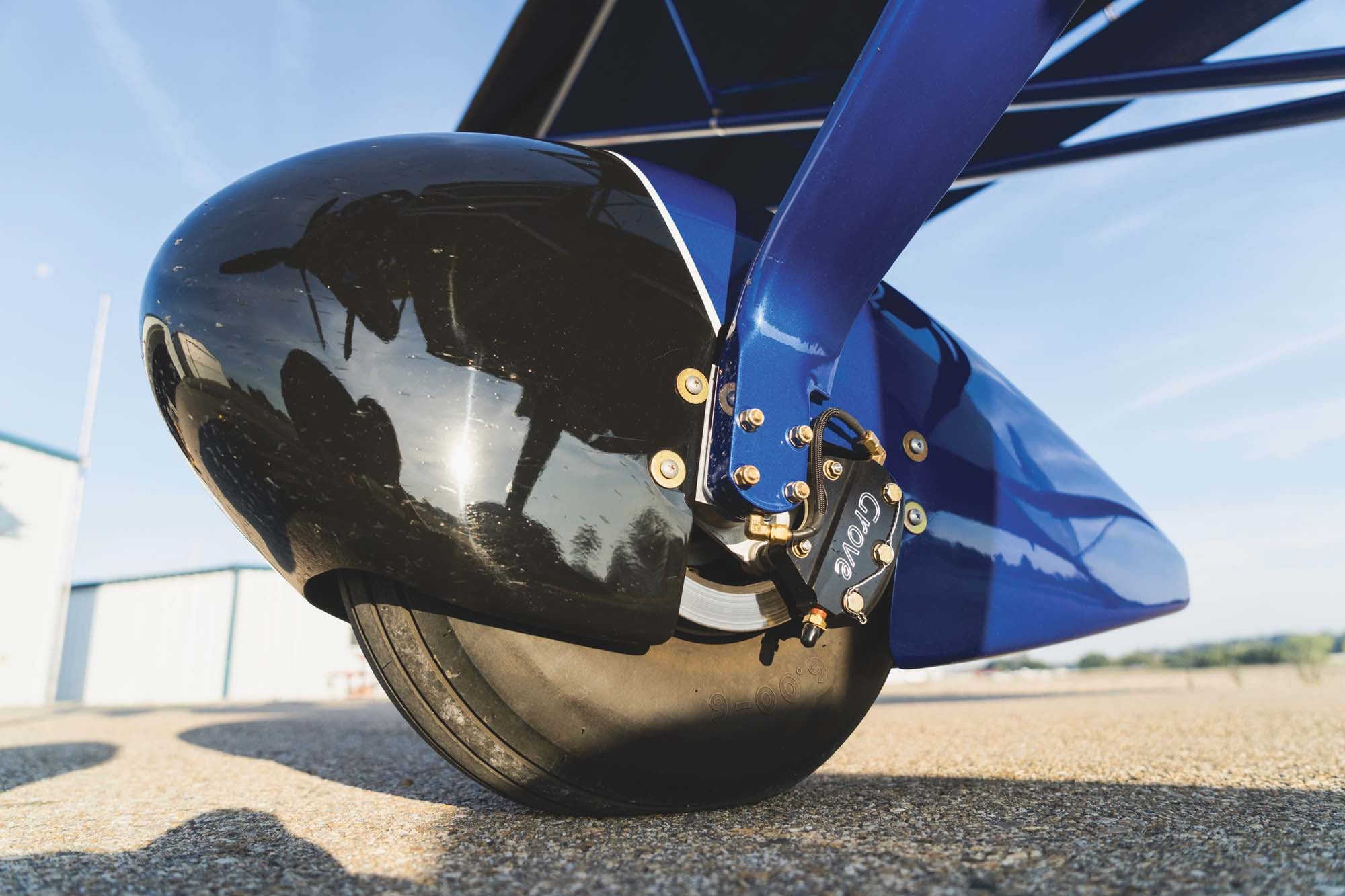
McBean warned that the three-blade prop provides a lot of drag at idle power, so I kept a bit in and gradually bled it off over the runway. The Speedster settles predictably and alights firmly on the aluminum gear. No tendency for the nose to wander, though it was a fairly calm day. I’m sure much steeper approaches are possible at near-idle power but we didn’t practice them. I found it easy to find the right pitch and power combination throughout the landing phase, in part because the cowling slopes out of the way, giving you very good over-the-nose visibility. It also helps that the shorter stance makes the landing attitude a bit flatter, which also assists with viz. It’s obvious that the Speedster is a bit stiffer-legged on the Grove gear than it would be on the damped cabane-style gear, but I wouldn’t hesitate to take it onto any of the grass strips I’m familiar with—strips that feel relatively rough in my own airplane. I might want the bigger wheels and/or the cabane gear for really hard-core terrain. But most pilots will be happy with the capabilities of the sleeker Grove gear.
So Who’s It For?
That’s the question, isn’t it? Because the Speedster and Super Sport are so similar, this is not an easy decision. In theory, the Speedster has a 7-mph advantage in cruise over the Super Sport but requires a bit more runway (350 feet on the landing roll against 290 feet) and stalls a bit faster (46 vs. 42 mph dirty). It’s possible that the Super Sport’s longer wing might close that speed gap at the high altitudes the Rotax 916 is more than capable of reaching. But we’re a bit in the noise here.
Mainly this comes down to mission. How far apart are your favorite landing places? What do the runways look like? How important is that small increment of lower stall and approach speed to safety where you fly? If we’re honest with ourselves, the Speedster will probably do virtually all of the things most builders want from their utility airplanes.
Making the decision even harder is that the Super Sport and Speedster are similarly priced: $41,995 and $44,995 for the base kits, respectively. Bear in mind that some items are standard on the Speedster that are options on the Super Sport. But by the time you’ve added the firewall-forward kit, engine and propeller (about a $57K investment alone) and the other options you know you can’t do without, that difference will seem quite small.
So it is a hard decision. The Speedster is more energetic in the way it handles but the Super Sport is hardly a truck. Far from it. In the real world of headwinds and turbulence, the speed difference might not amount to much. Maybe, in the end, it comes down to aesthetic preference and whichever way you choose bragging rights. Build what you like and be happy for the options. This is the ultimate compromise.
Photos: Jon Bliss.









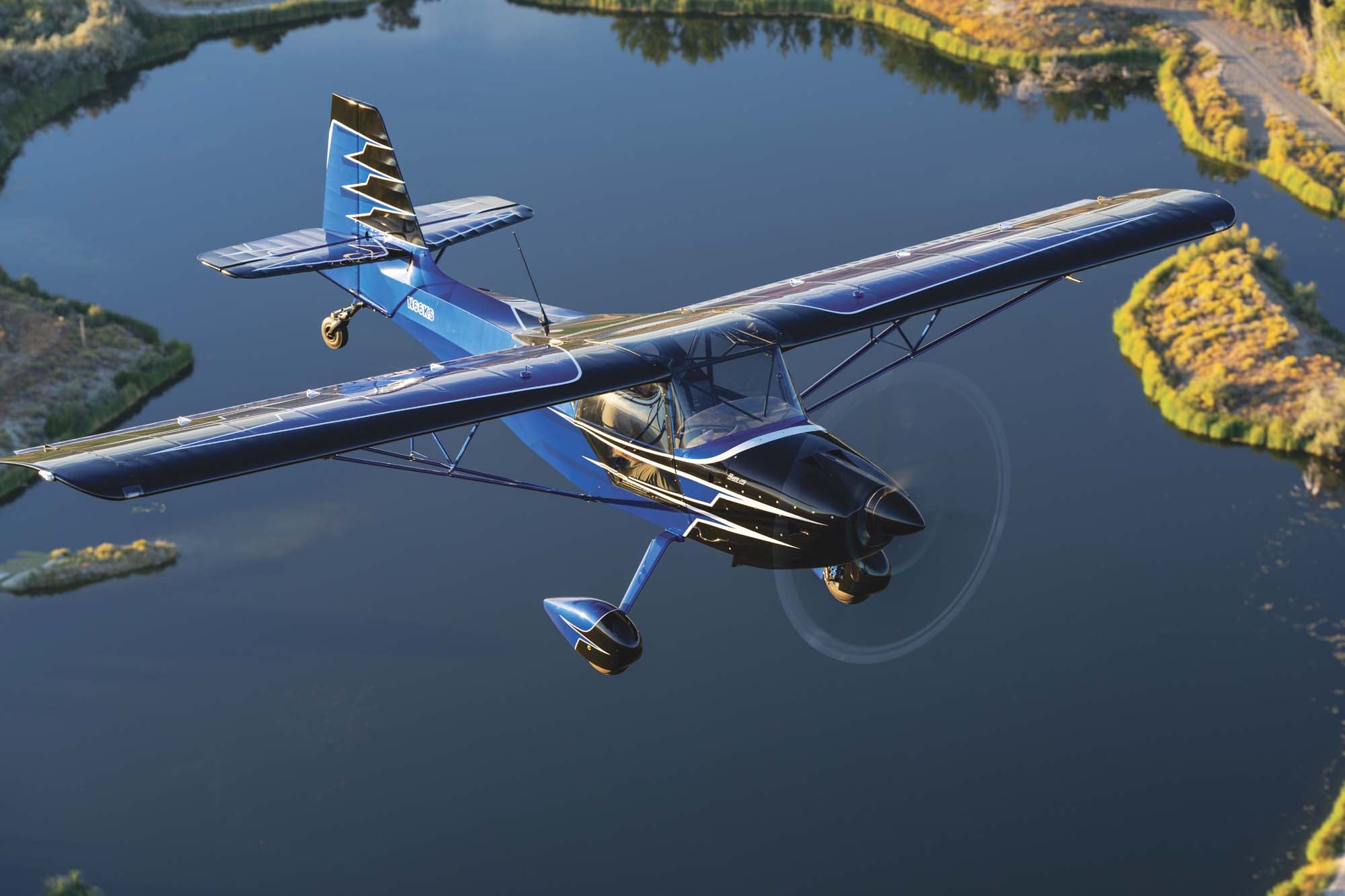













great report!
My first airplane was a Dan Denney Kitfox, built and first flight in 1975. A lively performer with a Rotax 582.
My first job as an aeronautical engineer after graduating from Embry-Riddle Aeronautical University was designing the next generation of the Kitfox for SkyStar Aircraft Corporation in 1993. The design has come a long way since it first hit the market 40 years ago this year!